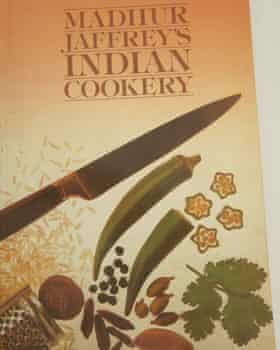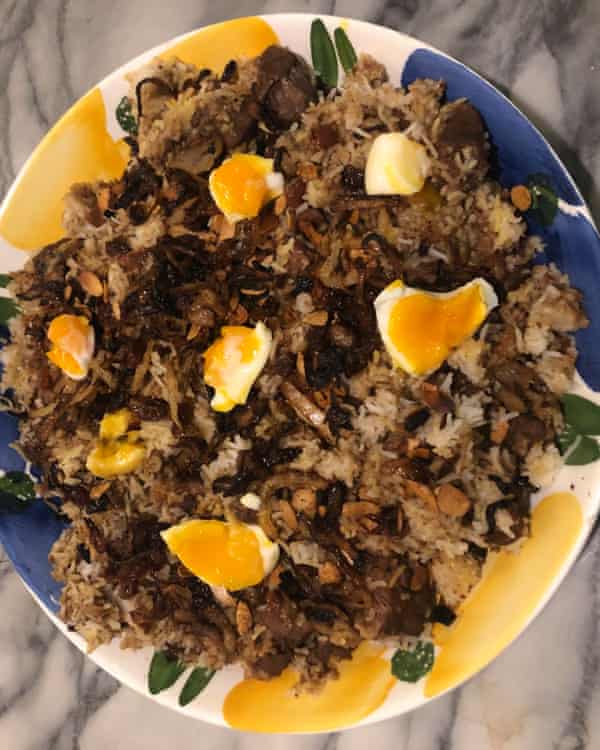In 1982 the food writer and novelist Sue Lawrence was in the depths of early motherhood. “But on Monday nights at 7pm the baby could cry all it wanted,” she says. “I had an appointment with the TV. Everybody stopped for it.” The programme which brought a slab of Britain to the sofa was Indian Cookery, presented by the actor turned food writer Madhur Jaffrey. “The show was a revelation,” Lawrence says. “She just demystified everything. We all rushed out to buy the accompanying book.”

That title, also called Indian Cookery, was not the first on the subject in Britain. Courtesy of rampaging Empire, the food of the Indian subcontinent had long had a place in British culture. According to the food historian Dr Annie Gray, one Colonel Kenney-Herbert published his version of an Indian cookbook way back in the 1850s. But Jaffrey’s Indian Cookery was different. It was a book about Indian food by an Indian person, and the first to reach a mass audience, selling hundreds of thousands of copies. It introduced Britain’s home cooks to the domestic rituals of spice roasting and grinding, to the layering of flavour and to a regionalism far from the generic dishes presented in high street restaurants.
“There was this terrible British version of curry cooked at home involving onions, cooking apples, chuck beef and astringent curry powder,” Lawrence says. Jaffrey’s recipes promised something else. Here is a deep, rust-coloured Kashmiri rogan josh, bursting with clove and asafoetida. Here’s aubergine in the pickling style, here is chana dal and makkhani murgha, or butter chicken. Here is a guidebook for another place entirely.
The story of the book Indian Cookery is also the story of the TV tie-in, now a cornerstone of British publishing. In those days the BBC had a Continuing Education Advisory Council, which was guaranteed the 7pm slot on BBC2. In 1978, despite resistance from many of the (male) management who considered food trivial, producer Jenny Rogers had scored a huge hit with Delia Smith’s Cookery Course, partly made possible by the invention of a new lens allowing for close-ups. She also commissioned and edited the accompanying title for BBC Books. “When they saw the success of that,” Rogers says now, “they changed their tune.”

She and her colleague Jenny Stevens needed a follow up. “We were eager consumers of Indian food,” Rogers says. “We ate at the Diwana Bhel Poori House on Drummond Street and places like that. We thought it would be great to be able to cook this food ourselves.” They just needed someone to front the show. The second wife of the actor Saeed Jaffrey worked in the same department. “She was the one who suggested Madhur, Saeed’s first wife,” Rogers says.
Jaffrey was the accidental cook. She had learnt her recipes via a correspondence course with her own mother while a struggling drama student in 1950s London. (The story was recently dramatised by BBC Radio 4.) She had then moved to New York and launched a successful acting career, winning awards for her performance in Shakespeare Wallah, a film by James Ivory and Ismail Merchant, whom she had introduced. In turn, Merchant introduced Jaffrey to Craig Claiborne, the grand food critic of the New York Times. She cooked for him; he wrote about her. It would lead, in 1973, to the US publication of her first book Invitation to Indian Cooking. “We flew her over and auditioned her in a horrible studio in the basement of Broadcasting House,” Rogers says. “She was a natural. Gracious, calm, so well-informed.”
Obviously, at this point I should ask a cook of Indian heritage for their opinion on the book. “The thing is, Indian people hate other Indian people talking about our food,” says Nisha Katona, chef and proprietor of the Indian restaurant group Mowgli. “But she carried it off with real dignity and gravitas. She talked about regionality and there was no compromise on ingredients. They respected her.” Still, it was clearly not a volume for other Indians. They learned their recipes at home, or not at all. This was a book for people like me.

My wife bought ours in 1984, when she was a student. Its pages are turmeric-stained, but not by me. I had never cooked from it before. I look up the recipe headed Lamb and Rice Casserole. Only underneath in italics does it say “Mughlai Lamb Biryani”, because this was another age when words like biryani needed translation. The recipe makes my head spin. The rice must be washed, then soaked for three hours and washed again.
There’s a lamb curry to be made, full of roasted and ground cumin and coriander seeds, cinnamon, cloves and peppercorns, a process taking 90 minutes at least. The elements must be introduced to each other along with various other bits and pieces and baked for another hour. For comparison I consult the lamb biryani recipe in Dishoom, one of the few other Indian cookbooks to have sold well. There are variations, but the essentials are the same. The lesson is learnt. If you’re offered a quick biryani recipe, say no. It’s rubbish.

It’s a rewarding faff, the very definition of a lockdown cooking project. I conclude that in future I may just make the lamb curry that gets stirred through the rice before baking, because it is one of those punchy, dry meat stews I adore. I also try the aubergine cooked in the pickling style. It’s inspired by a dish served at a grand hotel converted from a royal palace in the middle of a lake in Udaipur. I fry sliced aubergine and then leave it to drain of the oil before cooking down a sauce bursting with nigella and fennel seeds and combining it all to make a rich, vegan dish full of oomph and vigour. Her recipes include instructions to “stay watchful” or “work fast” so that ingredients don’t burn. These recipes are marathons, interspersed with furious sprints. The voice is clear and direct. Jaffrey’s is a hand on your shoulder.
From the short, sweet end of the book I also make her vermicelli pudding, aromatic with cardamom, the surface sprinkled with the brilliant green of pistachio. My family hates it, which just proves they’re ungrateful sods, and that I’m wasted on them. I, however, love its comforting, creamy depths; it’s like a rice pudding which has seen a few things. And really, that sums up the whole book. Indian Cooking by Madhur Jaffrey wasn’t just a collection of lovely dishes; it was an introduction to gloriously wider horizons. It was 200 pages of a vivacious education.
While many of Madhur Jaffrey’s books remain in print, Indian Cooking is not one of them. But many copies are still available secondhand
News bites
Sarit Packer and Itamar Srulovich, of the brilliant Middle Eastern restaurant Honey and Co, have been selling hampers throughout lockdown, stuffed full of their terrific baked goods, from sumac and vanilla shortbread to chocolate pistachio fudge cookies, as well as chutneys and crackers. Now they’ve launched DIY propositions. These are less meal kits than recipe boxes, providing all the raw ingredients to make their take on shakshuka or falafel, and so on. They are definitely for those in search of a project; that falafel kit, for example, starts with the soaking of the chickpeas. Kits cost around £40 and delivery is nationwide. honeyandco.co.uk
Anyone who’s been to the Abergavenny Food Festival should be familiar with Shepherds, the fabulous sheep’s milk ice-cream company run by festival founder Martin Orbach. The company has now launched nationwide delivery to most of the mainland UK. Tubs cost £7.50 and include damson and sloe gin, toffee and honeycomb and Lebanese coffee flavours, as well as the classics. They’re delivered in recyclable boxes insulated with recycled denim and chilled with padded envelopes of dry ice. shepherdsicecream.co.uk
Positive if anecdotal evidence of an eagerness by diners to get back into restaurants, from hospitality industry website Propel News: the 42 strong D&D London restaurant group reports very strong business ahead of the proposed outdoor opening on April 12, with some venues now booked all the way through April and May. Likewise, Rick Stein reports 20,000 customers have booked into his Cornish restaurants.
Email Jay at jay.rayner@observer.co.uk or follow him on Twitter @jayrayner1
from Lifestyle | The Guardian https://ift.tt/3cR57Op
via IFTTT

comment 0 Comment
more_vert